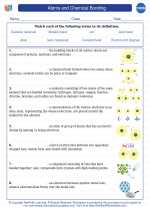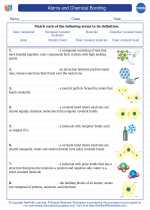Chemical De-Icing
Chemical de-icing is a process used to remove ice and prevent ice formation on surfaces such as roads, sidewalks, and runways. This is often done using chemical compounds that lower the freezing point of water, making it easier to remove ice and snow from these surfaces.
Chemical Compounds Used in De-Icing
There are several chemical compounds that are commonly used for de-icing purposes, including:
- Sodium chloride (rock salt): This is one of the most widely used de-icing agents. When spread on icy surfaces, it lowers the freezing point of water, causing the ice to melt.
- Calcium chloride: This compound is more effective than sodium chloride at lower temperatures and is often used in combination with rock salt for de-icing.
- Potassium acetate: This compound is less harmful to vegetation and is commonly used for de-icing runways and aircraft.
- Magnesium chloride: It is effective at lower temperatures and often used as an alternative to rock salt.
Process of Chemical De-Icing
The process of chemical de-icing involves spreading the chosen de-icing compound onto the icy surface. As the compound comes into contact with the ice, it dissolves and forms a brine solution. This solution has a lower freezing point than water, causing the ice to melt and preventing further ice formation.
Environmental Impact
While chemical de-icing compounds are effective at removing ice, they can have negative environmental impacts. These compounds can leach into soil and water, leading to soil and water pollution. They can also be harmful to vegetation and aquatic life. Therefore, it is important to use de-icing compounds responsibly and consider their environmental impact.
Study Guide
For a comprehensive understanding of chemical de-icing, consider the following study guide:
- Understand the concept of freezing point depression and how de-icing compounds achieve this effect.
- Learn about the different chemical compounds used in de-icing and their relative effectiveness at different temperatures.
- Explore the process of chemical de-icing and how it is applied to various surfaces.
- Examine the environmental impact of de-icing compounds and the importance of responsible usage.
- Consider the advancements in de-icing technology and the development of eco-friendly de-icing alternatives.
By mastering these topics, you will have a solid understanding of chemical de-icing and its significance in maintaining safe and functional infrastructure during winter months.
.◂Chemistry Worksheets and Study Guides High School. Atoms and Chemical Bonding

 Worksheet/Answer key
Worksheet/Answer key
 Worksheet/Answer key
Worksheet/Answer key
 Vocabulary/Answer key
Vocabulary/Answer key
 Vocabulary/Answer key
Vocabulary/Answer key
